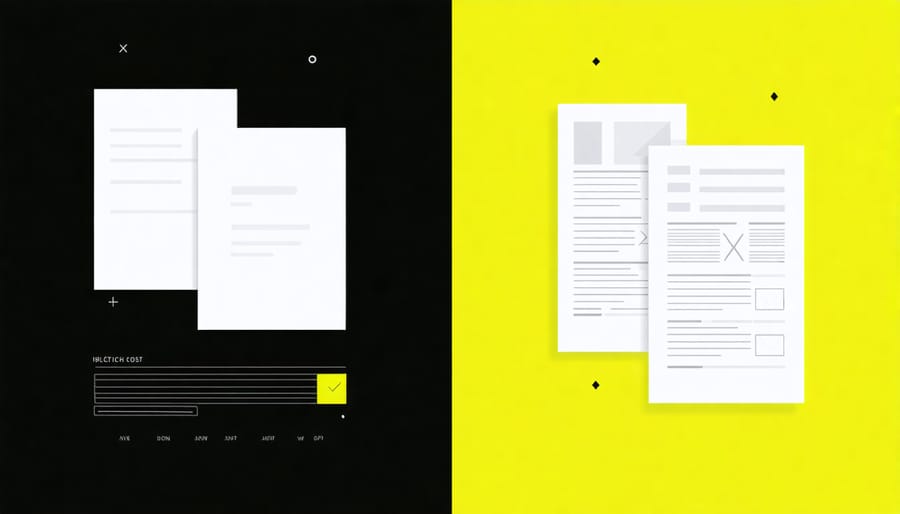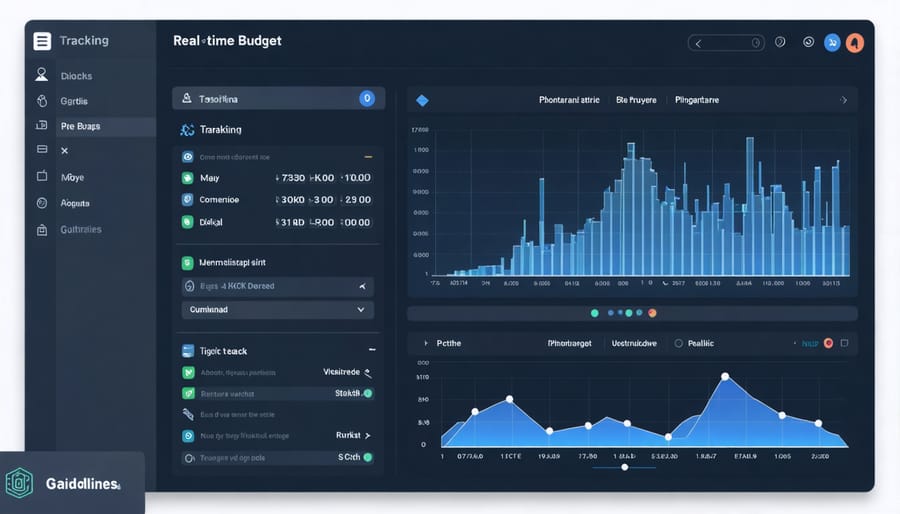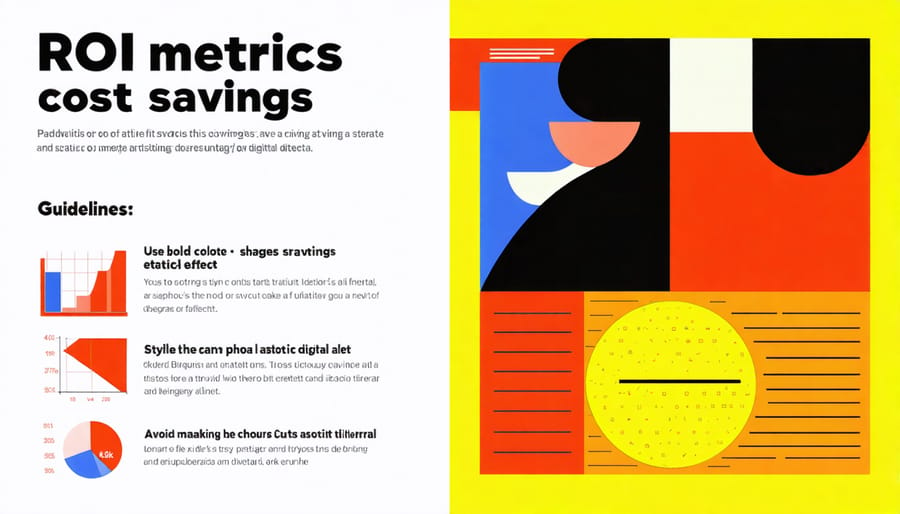In today’s complex construction landscape, mastering cost management demands sophisticated digital solutions that transform raw data into strategic insights. Construction cost management software has evolved from basic spreadsheet alternatives to comprehensive platforms that integrate real-time financial tracking, predictive analytics, and multi-stakeholder collaboration capabilities.
Modern construction projects face unprecedented challenges – from supply chain volatility to labor shortages and regulatory compliance requirements. These challenges make traditional manual cost tracking methods not just inefficient but potentially dangerous to project success. Leading construction firms are achieving 15-25% cost savings by implementing specialized software solutions that provide instant visibility into project expenses, automate routine calculations, and flag potential cost overruns before they become critical issues.
The right cost management software serves as a central nervous system for construction operations, connecting estimating, procurement, project controls, and financial reporting in a seamless digital ecosystem. This integration enables project managers to make data-driven decisions quickly, maintain strict budget controls, and deliver projects more predictably while maintaining profit margins in an increasingly competitive market.
This comprehensive guide examines the latest innovations in construction cost management software, helping you select and implement the solution that best fits your organization’s specific needs and challenges.
The Evolution of Construction Cost Management
Traditional vs. Digital Cost Management
Traditional cost management in construction relied heavily on manual processes, spreadsheets, and paper-based documentation, often leading to errors, delays, and communication gaps. Project managers would spend countless hours updating Excel sheets, reconciling invoices, and tracking change orders through physical paperwork. This approach not only consumed valuable time but also increased the risk of data entry mistakes and version control issues.
Modern digital solutions have revolutionized construction cost management by automating these processes and providing real-time visibility into project finances. Cloud-based software platforms enable instant access to cost data, automated calculations, and seamless collaboration among team members. Digital solutions also offer advanced features like predictive analytics, automated alerting for budget overruns, and integration with other construction management tools.
While traditional methods might seem cost-effective initially, they often result in hidden expenses through inefficiencies, errors, and delayed decision-making. Digital solutions, though requiring upfront investment, typically deliver significant ROI through improved accuracy, reduced administrative overhead, and better financial control. The ability to prevent cost overruns and identify potential issues early makes modern software solutions increasingly essential for successful project delivery.

Key Features of Modern Cost Management Platforms
Modern cost management platforms incorporate several critical features that revolutionize construction project financial control. Real-time data analytics enables immediate insight into project expenses, while automated cost tracking systems eliminate manual data entry errors and reduce administrative overhead.
Cloud-based collaboration tools allow team members to access and update cost information from any location, ensuring all stakeholders work with the most current data. Advanced forecasting capabilities utilize historical data and machine learning algorithms to predict potential cost overruns and optimize resource allocation.
Integration capabilities with existing enterprise systems, including accounting software and project management tools, create a seamless workflow. Change order management features help track modifications and their financial implications, while customizable dashboards provide visual representations of key performance indicators.
Document management systems maintain organized records of invoices, contracts, and purchase orders, creating a clear audit trail. Robust reporting tools generate detailed financial analyses and progress reports, supporting informed decision-making. Mobile accessibility ensures field teams can capture and report costs in real-time, maintaining accurate project financial status.
Core Components of Construction Cost Software
Real-time Budget Tracking
Real-time budget tracking represents a revolutionary advancement in modern cost control strategies, enabling project managers to monitor expenses with unprecedented precision. Construction cost management software provides instantaneous visibility into project spending, labor costs, material procurement, and equipment utilization through automated data collection and processing.
The system continuously updates financial data as transactions occur, allowing project teams to identify budget variances immediately rather than discovering them during monthly reviews. Dashboard interfaces display real-time cost metrics, including earned value analysis, cost performance indices, and budget-to-actual comparisons. This immediate feedback enables swift corrective actions when expenses begin to deviate from planned allocations.
Advanced solutions integrate with accounting systems, procurement platforms, and field reporting tools to consolidate financial data automatically. Project managers receive automated alerts when costs approach predetermined thresholds, while customizable reports provide stakeholders with up-to-the-minute financial status updates. This proactive approach to budget monitoring helps prevent cost overruns and ensures projects remain financially viable throughout their lifecycle.

Cost Forecasting and Analysis
Modern construction cost management software leverages advanced predictive analytics and machine learning algorithms to deliver accurate cost forecasting capabilities. These sophisticated tools analyze historical project data, market trends, and real-time project metrics to generate detailed cost projections. Through AI-powered project management features, the software can identify potential cost overruns before they occur and suggest mitigation strategies.
The analytical capabilities extend beyond basic forecasting, incorporating risk assessment modules that evaluate various scenarios and their financial implications. Project managers can simulate different cost scenarios, assess the impact of schedule delays, and analyze the effects of material price fluctuations on overall project costs. These insights enable more informed decision-making and proactive cost control measures.
Advanced visualization tools present complex cost data through intuitive dashboards and reports, making it easier for stakeholders to understand cost trends and make data-driven decisions. The software’s ability to integrate with other construction management systems ensures that cost forecasts remain current and accurate throughout the project lifecycle.
Document Management and Integration
Modern construction cost management software excels in handling complex financial documentation through integrated document management solutions that streamline workflow processes. These systems efficiently manage invoices, purchase orders, contracts, and change orders while maintaining clear audit trails and version control.
Key integration capabilities allow seamless data flow between accounting software, ERP systems, and project management platforms. This interconnectivity eliminates double data entry, reduces errors, and ensures real-time financial visibility across all project stakeholders. Advanced OCR (Optical Character Recognition) technology enables automatic document scanning and data extraction, significantly reducing manual processing time.
The software’s document control features include automated approval workflows, custom permission settings, and secure cloud storage with disaster recovery capabilities. Digital signature integration facilitates faster document approvals, while automated notification systems keep team members informed of pending actions and approaching deadlines. This comprehensive approach to document management ensures compliance with regulatory requirements while maintaining efficient cost tracking and control processes.
Reporting and Compliance
Modern construction cost management software excels in automating complex reporting tasks while ensuring regulatory compliance across multiple jurisdictions. These platforms generate detailed financial reports, progress tracking documents, and compliance certificates with minimal manual intervention. Project managers can access real-time dashboards showing cost variances, budget utilization, and forecasting data, enabling prompt decision-making and stakeholder communication.
The software’s compliance features typically include built-in templates aligned with industry standards such as GAAP, IFRS, and local building codes. Automated audit trails track all financial transactions and document changes, maintaining transparency and accountability throughout the project lifecycle. This systematic approach significantly reduces the risk of non-compliance and potential penalties.
Advanced reporting capabilities allow users to create customized reports tailored to different stakeholder requirements, from detailed cost breakdowns for internal teams to executive summaries for senior management. The software can automatically flag compliance issues, deadline approaches, and budget overruns, ensuring proactive risk management and maintaining regulatory adherence throughout the construction process.
Implementation Success Stories

Large-scale Commercial Project
The implementation of cost management software in the $850 million Gateway Plaza development project demonstrates the transformative impact of digital solutions in large-scale construction. The project, spanning 45 acres and including multiple commercial buildings, faced significant challenges in cost tracking across numerous contractors and thousands of line items.
Prior to implementing integrated cost management software, the project team struggled with data fragmentation and delayed reporting, leading to cost overruns of approximately 12% in the first quarter. Following the deployment of enterprise-level construction cost management software, the project achieved remarkable improvements in financial control and visibility.
The software solution enabled real-time tracking of over 3,500 cost items, automated progress payment calculations, and provided instant visibility into budget variances. Project managers reported a 35% reduction in time spent on cost reporting and a 15% improvement in cash flow management. The system’s ability to integrate with existing accounting software and BIM platforms proved crucial for maintaining data consistency across all project stakeholders.
Key benefits included automated change order management, resulting in a 40% faster approval process, and improved subcontractor payment tracking, which reduced payment delays by 60%. The software’s predictive analytics capabilities helped identify potential cost overruns weeks in advance, allowing for proactive mitigation strategies.
This implementation resulted in the project finishing 2% under budget and three weeks ahead of schedule, demonstrating the substantial return on investment in construction cost management software for large-scale projects.
Small-scale Residential Development
Green Valley Homes, a boutique residential developer in Colorado, transformed their project cost management by implementing specialized construction cost management software. Prior to adoption, they struggled with cost overruns averaging 12% on their custom home projects, primarily due to manual tracking processes and delayed financial reporting.
After implementing an integrated cost management solution, they achieved remarkable results within their first year. The company reported a reduction in cost overruns to just 3%, improved cash flow management, and enhanced ability to provide real-time updates to clients. Project Manager Sarah Chen notes, “The software gave us unprecedented visibility into our costs, allowing us to catch potential issues before they became problems.”
The system particularly excelled in managing change orders, a common challenge in custom residential construction. Green Valley Homes saw a 40% reduction in change order processing time and improved accuracy in client billing. The software’s mobile capabilities enabled site supervisors to update material usage and labor hours in real-time, eliminating end-of-day data entry and reducing reporting errors by 60%.
The company’s success demonstrates how even smaller construction firms can leverage technology to achieve significant improvements in cost control. Their initial investment was recovered within eight months through improved efficiency and reduced errors, proving that cost management software can deliver substantial ROI for residential developers.
ROI and Business Impact

Cost Savings Metrics
Implementing cost management software in construction projects has demonstrated significant measurable benefits across multiple metrics. Studies show that companies typically achieve a 15-20% reduction in overall project costs through improved budget tracking and resource allocation. Real-time visibility into expenses has led to an average decrease of 23% in cost overruns across projects of varying scales.
Material waste reduction presents another substantial area of savings, with contractors reporting 12-18% lower material costs through better inventory management and procurement optimization. Labor cost efficiency increases by approximately 25% through improved scheduling and resource utilization, while administrative overhead decreases by 30-40% due to automated workflows and reduced manual data entry.
Project timeline adherence also shows marked improvement, with an average 28% reduction in delays related to budget constraints. Companies implementing comprehensive cost management solutions report ROI within 6-12 months of deployment, with some achieving payback periods as short as 4 months for larger projects.
Documentation and compliance-related costs decrease by roughly 35% through automated reporting and standardized processes. Furthermore, enhanced forecasting capabilities lead to a 20% improvement in bid accuracy, resulting in more profitable project contracts and reduced risk exposure.
Operational Efficiency Gains
Cost management software significantly streamlines construction operations by automating time-consuming tasks and eliminating manual data entry processes. Studies show that construction firms implementing these solutions experience a 25-35% reduction in administrative overhead and a 40% decrease in documentation errors.
The software enables real-time collaboration between office and field teams, reducing communication delays and decision-making bottlenecks. Project managers can instantly access cost data, approve change orders, and track resource allocation from any location, leading to faster project execution and reduced operational delays.
Automated workflows for purchase orders, invoicing, and payment processing cut processing time by up to 50% while ensuring compliance with established procedures. The integration of mobile capabilities allows field personnel to submit time cards, expense reports, and material requisitions directly from the job site, eliminating duplicate data entry and improving accuracy.
Advanced analytics and reporting features provide immediate insights into project performance metrics, enabling proactive decision-making and resource optimization. Construction firms report an average 15-20% improvement in resource utilization and a 30% reduction in budget overruns after implementing comprehensive cost management solutions.
These efficiency gains translate directly into improved project margins and enhanced competitive advantage in the marketplace.
Selection and Implementation Guidelines
Assessment Criteria
When evaluating cost management software for construction projects, several key factors must be considered to ensure the solution aligns with your organization’s critical management areas and operational requirements. First, assess the software’s scalability and flexibility to accommodate projects of varying sizes and complexities. The solution should seamlessly integrate with existing systems, including accounting software, project management tools, and enterprise resource planning (ERP) platforms.
Security features and data protection capabilities are paramount, particularly when handling sensitive financial information and contract details. Evaluate the software’s encryption standards, access control mechanisms, and backup procedures. The user interface should be intuitive and accessible, allowing team members with different technical expertise to navigate the system effectively.
Consider the vendor’s track record in the construction industry, including their experience, customer support quality, and commitment to regular updates and improvements. The software’s reporting capabilities should provide comprehensive insights through customizable dashboards and real-time analytics. Cost-tracking features must support multiple currencies, tax requirements, and regional compliance standards.
Implementation requirements, including training needs and technical support, should be carefully evaluated. The total cost of ownership, including licensing, maintenance, and potential customization expenses, must align with your budget while delivering clear ROI through improved efficiency and cost control.
Implementation Best Practices
Successful implementation of cost management software requires a structured approach and careful planning. Begin by forming a dedicated implementation team comprising key stakeholders from various departments, including finance, project management, and field operations. This team should oversee the entire deployment process and serve as champions for the new system.
Start with a thorough assessment of your current processes and clearly define your objectives. Document existing workflows and identify pain points that the new software should address. This baseline understanding will help measure the software’s impact and ROI post-implementation.
Develop a phased rollout strategy rather than attempting a complete organizational switch. Begin with a pilot project involving a small team, allowing for testing and refinement of processes before wider deployment. This approach minimizes disruption and helps identify potential challenges early.
Invest in comprehensive training programs for all users. Include both initial training sessions and ongoing support to ensure proper software utilization. Create detailed documentation and quick reference guides tailored to different user roles within your organization.
Establish clear data migration protocols and ensure proper integration with existing systems. Maintain data integrity throughout the transition by implementing robust validation procedures. Regular backups and testing of the system during implementation are crucial for risk management.
Monitor key performance indicators during the early adoption phase and gather user feedback systematically. Make necessary adjustments based on real-world usage patterns and user suggestions. Consider implementing a mentorship program where experienced users can guide newer team members.
The adoption of cost management software has become increasingly crucial for construction industry success, transforming how projects are planned, executed, and monitored. As we’ve explored throughout this article, these sophisticated solutions offer comprehensive features that streamline budgeting, enhance cost control, and improve project outcomes through real-time data analysis and reporting.
Looking ahead, the construction cost management software landscape continues to evolve with emerging technologies. Artificial intelligence and machine learning capabilities are becoming more prevalent, offering predictive analytics for more accurate cost forecasting. Integration with BIM technology, IoT devices, and mobile applications is creating more connected and efficient project environments.
The future outlook for construction cost management software is promising, with developments in cloud computing and data analytics leading to more sophisticated solutions. We can expect to see increased automation of routine tasks, enhanced collaboration features, and more robust integration capabilities with other construction management tools.
For construction professionals considering implementation, the key is to select a solution that aligns with their specific needs while ensuring scalability for future growth. As the industry continues to digitize, those who embrace these technological solutions will be better positioned to maintain competitive advantages, deliver projects on budget, and achieve greater operational efficiency.
The investment in cost management software is no longer optional but a strategic necessity for construction businesses aiming to thrive in an increasingly complex and competitive market.

